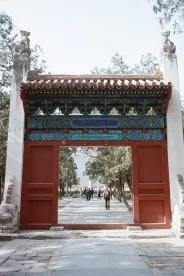On March 13, 2015, the National Development and Reform Commission (the “NDRC”) and the Ministry of Commerce promulgated the Catalogue of Industries for Guiding Foreign Investment (2015 Revision) (the “2015 Catalogue”), which is the 6th amendment to the said catalogue since first promulgated in 1995. The 2015 Catalogue will take effect on April 10, 2015, and the 2011 Catalogue Amendment (the “2011 Catalogue”) will be repealed on the same date.
This article will focus on the changes made in the 2015 Catalogue and its impacts on certain industries.
A. Changes in the 2015 Catalogue
In comparison to the 2011 Catalogue, the number of restricted industries was reduced from 79 to 38, and the number of prohibited industries was reduced from 38 to 36.
Chinese government continues relaxing foreign investment in manufacturing industry in the 2015 Catalogue. Foreign investors are also allowed to engage in real estate, E-Commerce, Financial, Wholesale, Retail and other service providing industries.
In addition, it is worth noting that only “laws and regulations” may restrict or prohibit foreign investment in certain industry. The “specific rule” or “industrial policy” promulgated by the State Council will not regulate foreign investment access.
B. Encouraged Industry
We would like to bring your attention to the following with respect to the Encouraged Industry in the 2015 Catalogue:
-
“Development and manufacturing of Traditional Chinese Medicine(TCM) electronic auxiliary teaching equipment based on Computer Information Technology such as Sound, Light, Electricity and Touch”, and “Development and manufacturing of Virtual pathology and physiological model”, “Development and application of Internet of Things (IOT) technology” and “Creativity Industries like Industrial Design, Architectural Design and Clothing Design ” are added into the Encouraged Industry.
-
Certain original restricted industries are shifted into encouraged category, for example, “Construction and operation of grids (Chinese parties as controlling shareholders)”.
-
Limitations on the form and stake-holding proportion of foreign investment are also relaxed. For instance, items like “Planting or breeding of Chinese medicinal materials”, “Design and manufacturing of airborne equipment for civil aviation” , “Design and manufacturing of yachts”, and “Manufacturing of equipment for air traffic control systems”, are no longer limited to Sino-foreign equity or contractual joint ventures; “Comprehensive maintenance of infrastructures of high-speed railway lines, passenger railway lines and intercity railways” are no longer subject to the “Chinese parties as controlling shareholders” requirement.
C. Restricted Industry
Most of the amendments in the 2015 Catalogue fall into the Restricted Industry Category. In the 2015 Catalogue, there are 38 industries in the Restricted Category, among which, only 8 industries are subject to the “Sino-foreign equity or contractual joint ventures” requirement, while 17 industries are subject to the “Chinese parties as controlling shareholders” requirement. The details of these changes are as follows:
-
A substantial decrease in the number of restricted items. Restricted items in connection with the manufacturing industries, wholesale, retail and real estate industry are greatly reduced or removed in entirety. At the same time, in the NDRF draft of the 2015 Catalogue, “Printing of publications (Chinese parties as controlling shareholders)”, “Construction and operation of movie theaters (Chinese parties as controlling shareholders)”, “Construction and operation of large theme parks” were removed from the restrictive items. Nevertheless, these items remain in the Restricted Industry Category in the 2015 Catalogue.
-
“Online sales” is removed from restricted items (together with the foreign shareholding ratio limitation), reflecting the recent fast growth of the Chinese E-commerce business.
-
With respect to the financial industry, the 2015 Catalogue removed “finance companies, trust companies, currency brokerage companies and Insurance brokerage companies” from the Restricted Industry Category.
A foreign shareholding limitation is added to the “Chinese Invested Commercial Bank”. On the other hand, for securities companies, relevant clause is now changed as “eligible companies operated over two year since establishment shall apply for expansion of business scope (with the proportion of foreign investment not exceeding 49%)”. -
Restricted items in connection with the real estate industry are entirely removed in the 2015 Catalogue.
-
Certain original encouraged items, such as “Higher educational institutions (limited to Sino-foreign equity or contractual joint ventures)”, are re-categorized into the Restricted Industry Category. These institutions are limited to “Sino-foreign contractual joint ventures with Chinese party playing the dominant role”.
D. Prohibited Industry
There are not many amendments to the prohibited industry in the 2015 Catalogue. Currently 36 items fall into the Prohibited Industry Category.
Certain items such as “Processing of green tea and special tea with Chinese traditional techniques (famous tea, dark tea, and etc.)” and “Manufacturing of open (i.e., acid mist directly coming out) lead-acid batteries, mercury-contained silver oxide button batteries, mercury-contained alkaline zinc-manganese button batteries, pasted zinc-manganese batteries, and nickel-cadmium batteries” are removed from the Prohibited Industry Category.
Some previously restricted items are re-categorized to the prohibited industry. For example, the restricted item “Wholesale and Retail of tobacco” in the 2011 Catalogue is moved to be a prohibited item, and changed as “Wholesale and Retail of tobacco leaves, cigarette, threshed and re-dried tobacco leaves and other tobacco products”.
E. Conclusion
The 2015 Catalogue reflects Chinese government’s policy on continue encouraging foreign investments and lowering the market entry barriers. With the introduction of the 2015 Catalogue, we hope another wave of foreign investments in China can be boosted and promote the economic development of China in the future.
Xie Yu and Yuxi Sheng are the authors of this article.



 />i
/>i